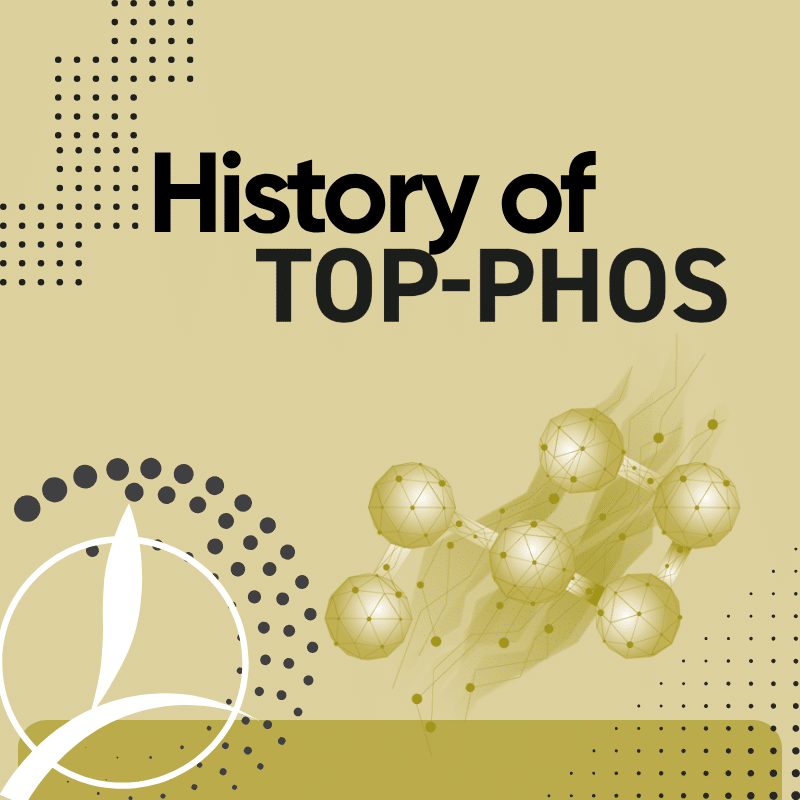Macronutrients
When it comes to ensuring optimal growth and productivity in plants, macronutrients play an essential role. These essential nutrients are required in large quantities to promote various physiological processes and developmental stages in crops.
Nitrogen: The Building Block of Life
Function: Nitrogen is a key component of proteins, chlorophyll, leaf growth, and nucleic acids. It serves as a building block for enzymes and amino acids, playing a crucial role in the overall metabolism and developmental processes of plants.
Deficiency Symptoms: Slow growth, yellowing of leaves starting from the tips towards the stem are common indicators of nitrogen deficiency.
Soil Presence: Nitrogen in the soil is stable and plant-available predominantly in two forms: nitrate (NO₃⁻ ) and ammonium (NH₄⁺). However, nitrogen losses can occur, and the conversion of applied nitrogen to these forms can happen quickly.
Excelis Maxx: A Dual Inhibitor Nitrogen Stabilizer. If you aim to optimize nitrogen availability while minimizing losses, Excelis Maxx is your go-to solution. Excelis Maxx contains our LCN Complex which is a combination of NBPT, DCD & phenolic extract to provide above & below ground protection against nitrogen loss. Excelis Maxx is the only stabilizer on the market with a soil microbial activator (our patented Rhizovit Complex) for improved nutrient uptake.

Phosphorus: The Energy Facilitator
Function: Phosphorus is crucial for root development, flowering, and creating usable energy (ATP). It facilitates energy transfer and storage within the plant, aiding in various metabolic processes.
Deficiency Symptoms: Dark, pale leaves, possibly exhibiting a reddish-purple color, along with stunted vegetative or root growth, are signs of phosphorus deficiency.
Soil Presence: Phosphorus has a -3 charge, making it highly attractive to positive charges in the soil (such as calcium, aluminum, and iron). Once bonded, the plant can no longer access the phosphorus.
Top-Phos: A Revolutionary Phosphorus Fertilizer. Top-Phos is the result of an innovative, patented manufacturing process that complexes phosphate with humic substances and marine calcium. This protects the phosphate from tie-up in all soil pH conditions, while also stimulating root development and microbial activity in the rhizosphere to support greater nutrient uptake. Importantly, it is available in cool soil conditions, ensuring consistent phosphorus availability throughout the growing season.

Potassium: The Yield and Quality Enhancer
Function: Potassium significantly influences plant growth, water balance, and crop quality. It also increases stress tolerance, making it vital for robust plant health.
Deficiency Symptoms: Yellowing or browning of leaf edges, stunted growth, small leaves, and poor water use efficiency highlight potassium deficiency.
Soil Presence: Potassium can bind to other minerals in the soil, and the availability is influenced by the soil’s Cation Exchange Capacity (CEC).
Duo-Maxx: Stabilize your N-P-K with Duo-Maxx. Duo-Maxx boosts nutrient efficiency and plant growth. It includes our patented Phenolic binding compound (MPPA) to stabilize nutrients and prevent loss, along with NBPT and DCD. The Duo Complex further enhances the formulation by stimulating microbial activity for improved nutrient uptake.

Secondary Nutrients
While macronutrients are essential, secondary nutrients like Sulfur, Calcium, and Magnesium play equally vital roles in supporting plant vigor and reinforcing cell structure. Required in significant amounts, these nutrients bridge the gap between basic nourishment and peak performance, helping plants reach their full potential. Let’s explore the importance of these three key secondary nutrients.
Sulfur (S): The Metabolic Magician
Function: Sulfur is pivotal in plant metabolism, chlorophyll production, and photosynthesis. It plays a fundamental role in synthesizing essential amino acids and enzymes, thereby facilitating numerous physiological processes in plants.
Deficiency Symptoms: Sulfur deficiency manifests as pale green, yellowish green, or yellow young leaves. You may also notice cupped and stunted leaves, indicating an urgent need for sulfur supplementation.
Soil Presence: Sulfur exists in various forms within the soil, but the plant-available form is sulfate (SO4). This mobile form can be leached out of the soil, necessitating replenishment. Elemental sulfur is a common choice for soil addition, as microbial activity converts it into plant-available sulfate.
Top-Phos and Sulfur Synergy: Sulfur and phosphorus (P) share a synergistic relationship, with sulfur aiding phosphorus uptake and vice versa. Top-Phos benefits from this synergy by containing sulfur which optimizes nutrient availability and enhances plant growth.

Calcium (Ca): The Strength Builder
Function: Calcium is integral to cell wall strength, playing a crucial role in overall cell processes. It improves nutrient uptake, fortifies plant strength, and enhances tolerance to biotic stressors such as pathogens.
Deficiency Symptoms: Calcium shortage leads to small, stunted new growth, accompanied by brown spots on the leaf edges migrating inward. These symptoms indicate weakened cell walls and impaired nutrient movement within the plant.
Soil Presence: Prairie soils are replete with calcium, but often in insoluble forms that plants cannot access. This peculiarity can cause calcium deficiency even in calcium-rich soils. Importantly, soluble calcium helps displace salts, reducing soil compaction and improving soil structure.
Why Use Humistart-PhysioPro? : Humistart-PhysioPro is a groundbreaking solution for calcium supplementation. It contains Calcimer, a form of marine calcium with a unique porous structure and high surface area that increases nutrient availability and bioactivity. It repairs soil structure, mineralizes nutrients, and enhances soil biology, paving the way for healthier and more resilient crops.

Magnesium (Mg): The Photosynthetic Powerhouse
Function: Magnesium is indispensable for chlorophyll and photosynthesis. It acts as an enzyme co-factor, facilitating protein synthesis, cell growth, and overall plant metabolism.
Deficiency Symptoms: Magnesium deficiency is characterized by the yellowing of older leaf veins, stunted growth, and reduced flowering. These symptoms reflect the impaired photosynthetic activity and enzyme functioning in plants.
Soil Presence: Magnesium aids in maintaining soil structure and holding water and nutrients for plant uptake. Its availability is influenced by soil pH, texture, and organic matter content. Managing these factors optimally ensures magnesium sufficiency for healthy plant growth.
Micronutrients
Though needed in smaller quantities than macro and secondary nutrients, micronutrients play a crucial role in plant health and development. These essential elements drive key enzymatic processes and support overall vitality, making them indispensable for a thriving, productive crop.
Boron: Architect of Cell Wall Integrity
Function: Boron is crucial for cell wall formation, cell function, plant growth, nutrient uptake, and pollination. It orchestrates vital growth processes, ensuring structural integrity and reproductive success within plants.
Zinc: Growth Regulator
Function: Zinc plays a key role in chlorophyll production, protein synthesis, carbohydrate metabolism, and auxin formation. This micronutrient is indispensable for growth regulation, promoting vigorous plant development.
Manganese: The Photosynthetic Enhancer
Function: Manganese acts as a cofactor in photosynthesis and respiration. It aids in chlorophyll synthesis and stability, enzyme activation, and nitrogen utilization. These roles underscore its importance in energy conversion and metabolic efficiency.
Iron: The Energy Facilitator
Function: Iron facilitates chlorophyll synthesis, photosynthesis, oxygen transport, and enzymatic function. Its contributions are fundamental to effective energy production and distribution within the plant, driving robust growth.
Copper: Enzymatic Activator for Structural and Metabolic Functions
Function: Copper serves as a co-factor in essential enzyme processes such as photosynthesis, respiration, cell wall metabolism, lignin biosynthesis, and vitamin A production. This multifaceted role highlights copper’s necessity for comprehensive plant health and resilience.
Molybdenum: The Conversion Specialist
Function: Molybdenum aids in converting nitrates into plant-available forms, essential for the legume nitrogen fixation process. Its contributions are key to effective nitrogen utilization, underpinning vigorous plant growth.
Chlorine: Regulator of Osmotic Balance
Function: Chlorine plays a role in various physiological processes, such as photosynthesis, water balance, and disease resistance. This element ensures proper plant hydration and fortitude against environmental stressors.
Nickel: Essential Cofactor in Nitrogen Metabolism
Function: Nickel is crucial as a co-factor for the urease enzyme, responsible for converting urea to ammonia. This role is vital for nitrogen metabolism, promoting efficient nutrient utilization.
The Power of Foliar Feeding
To maximize the impact of these micronutrients, foliar feeding is an effective strategy. By delivering nutrients directly to plant tissues, foliar feeding ensures timely absorption and utilization, enhancing efficiency and promoting vigorous growth.

Fertileader: Targeted Micronutrient Solutions, Tailored for Your Crops
TIMAC AGRO’s Fertileader range offers a tailored blend of chelated micronutrients, designed to meet specific crop needs. This innovative solution provides:
- Direct delivery of essential nutrients to plant tissue.
- Enhanced nutrient absorption and utilization.
- Customized formulations to boost overall plant health and resilience.
In conclusion, balanced nutrient management by incorporating macronutrients, secondary nutrients, and micronutrients is the foundation of achieving optimal crop growth and productivity. By understanding the unique roles and interactions of these nutrients, growers can make informed decisions to nurture their crops to their fullest potential. Embrace the comprehensive approach to nutrient management and witness the remarkable transformation in your fields, leading to a more profitable operation.




